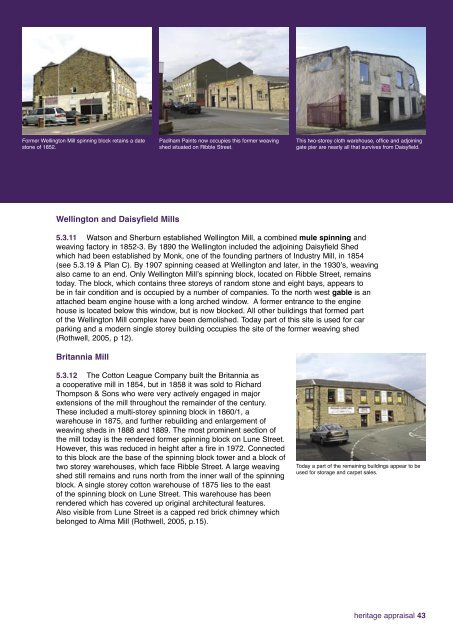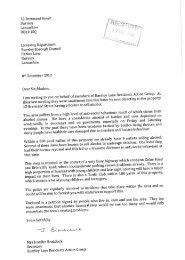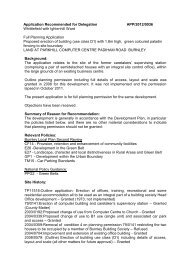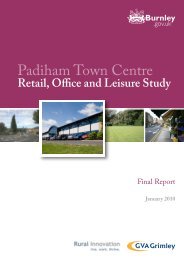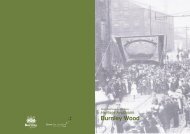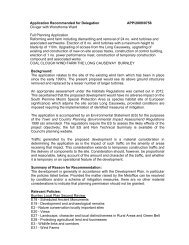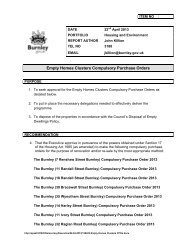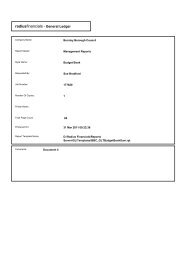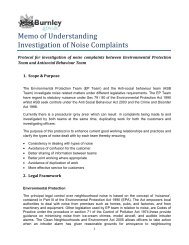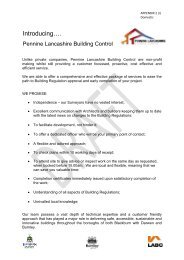The Padiham Heritage Appraisal - Burnley Borough Council
The Padiham Heritage Appraisal - Burnley Borough Council
The Padiham Heritage Appraisal - Burnley Borough Council
- No tags were found...
Create successful ePaper yourself
Turn your PDF publications into a flip-book with our unique Google optimized e-Paper software.
Former Wellington Mill spinning block retains a datestone of 1852.<strong>Padiham</strong> Paints now occupies this former weavingshed situated on Ribble Street.This two-storey cloth warehouse, office and adjoininggate pier are nearly all that survives from Daisyfield.Wellington and Daisyfield Mills5.3.11 Watson and Sherburn established Wellington Mill, a combined mule spinning andweaving factory in 1852-3. By 1890 the Wellington included the adjoining Daisyfield Shedwhich had been established by Monk, one of the founding partners of Industry Mill, in 1854(see 5.3.19 & Plan C). By 1907 spinning ceased at Wellington and later, in the 1930’s, weavingalso came to an end. Only Wellington Mill’s spinning block, located on Ribble Street, remainstoday. <strong>The</strong> block, which contains three storeys of random stone and eight bays, appears tobe in fair condition and is occupied by a number of companies. To the north west gable is anattached beam engine house with a long arched window. A former entrance to the enginehouse is located below this window, but is now blocked. All other buildings that formed partof the Wellington Mill complex have been demolished. Today part of this site is used for carparking and a modern single storey building occupies the site of the former weaving shed(Rothwell, 2005, p 12).Britannia Mill5.3.12 <strong>The</strong> Cotton League Company built the Britannia asa cooperative mill in 1854, but in 1858 it was sold to RichardThompson & Sons who were very actively engaged in majorextensions of the mill throughout the remainder of the century.<strong>The</strong>se included a multi-storey spinning block in 1860/1, awarehouse in 1875, and further rebuilding and enlargement ofweaving sheds in 1888 and 1889. <strong>The</strong> most prominent section ofthe mill today is the rendered former spinning block on Lune Street.However, this was reduced in height after a fire in 1972. Connectedto this block are the base of the spinning block tower and a block oftwo storey warehouses, which face Ribble Street. A large weavingshed still remains and runs north from the inner wall of the spinningblock. A single storey cotton warehouse of 1875 lies to the eastof the spinning block on Lune Street. This warehouse has beenrendered which has covered up original architectural features.Also visible from Lune Street is a capped red brick chimney whichbelonged to Alma Mill (Rothwell, 2005, p.15).Today a part of the remaining buildings appear to beused for storage and carpet sales.heritage appraisal 43


